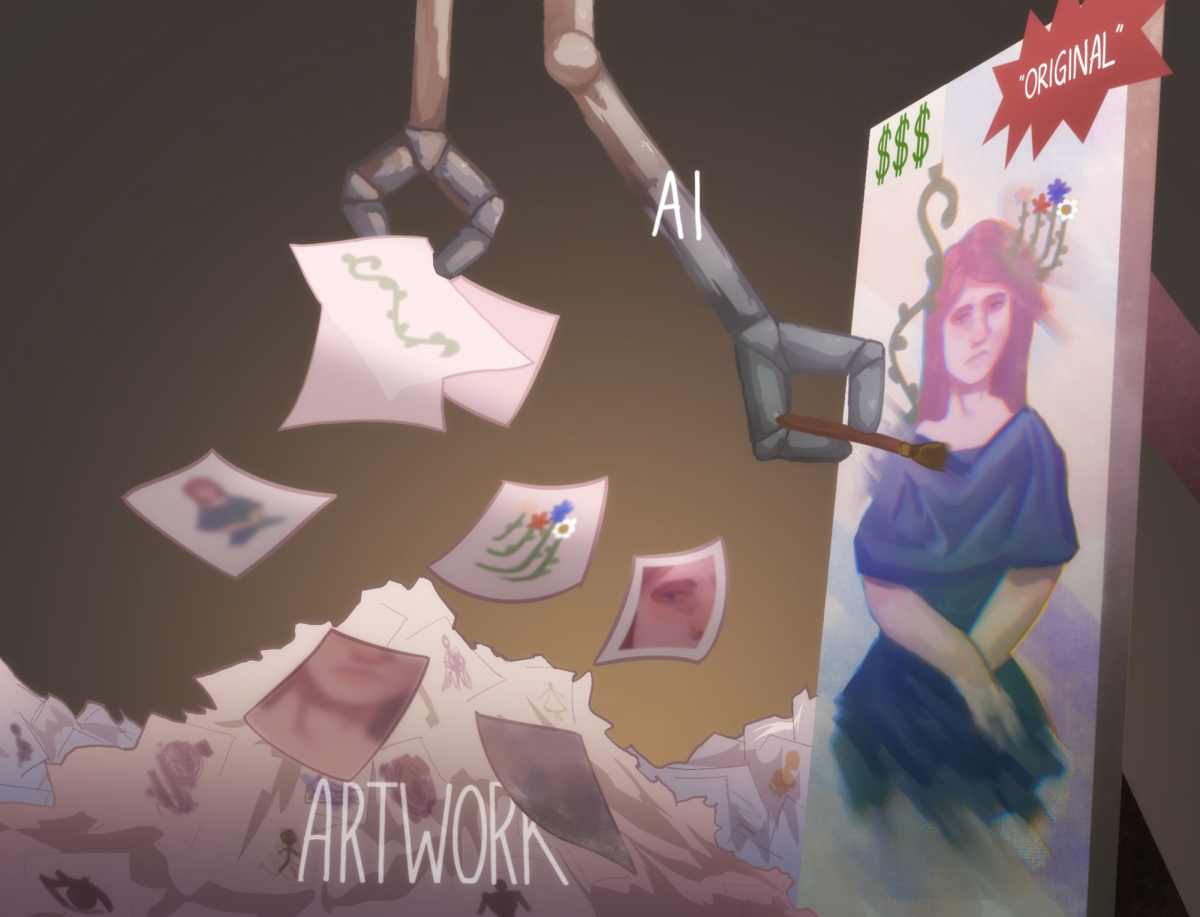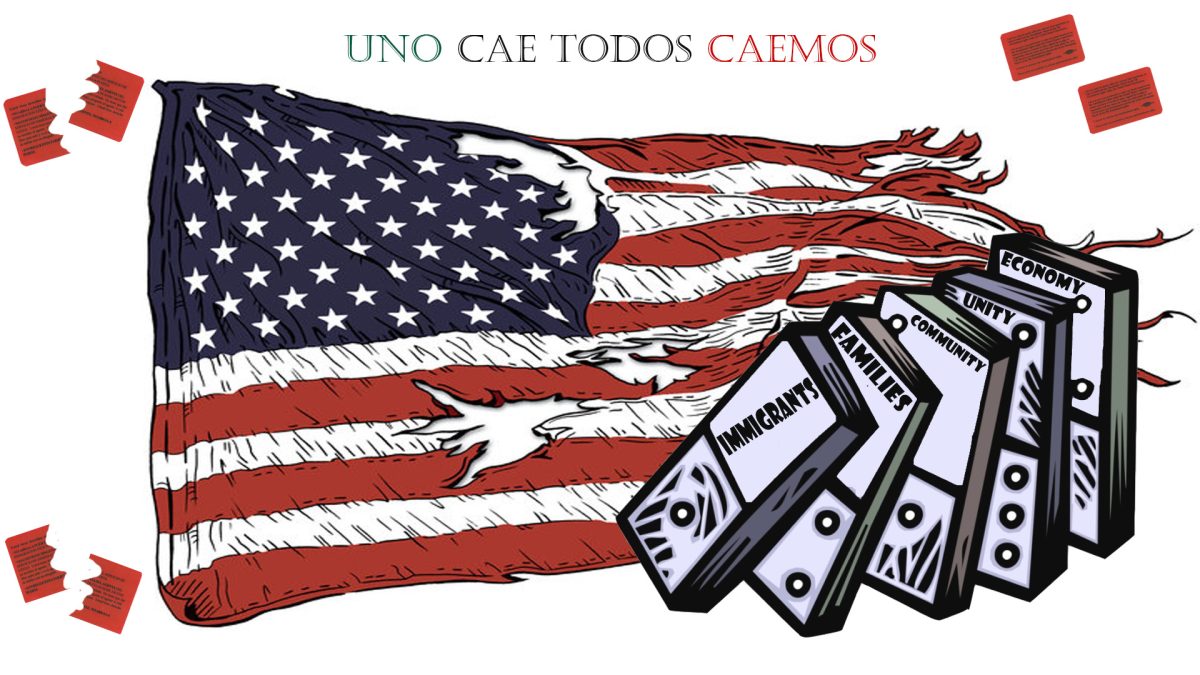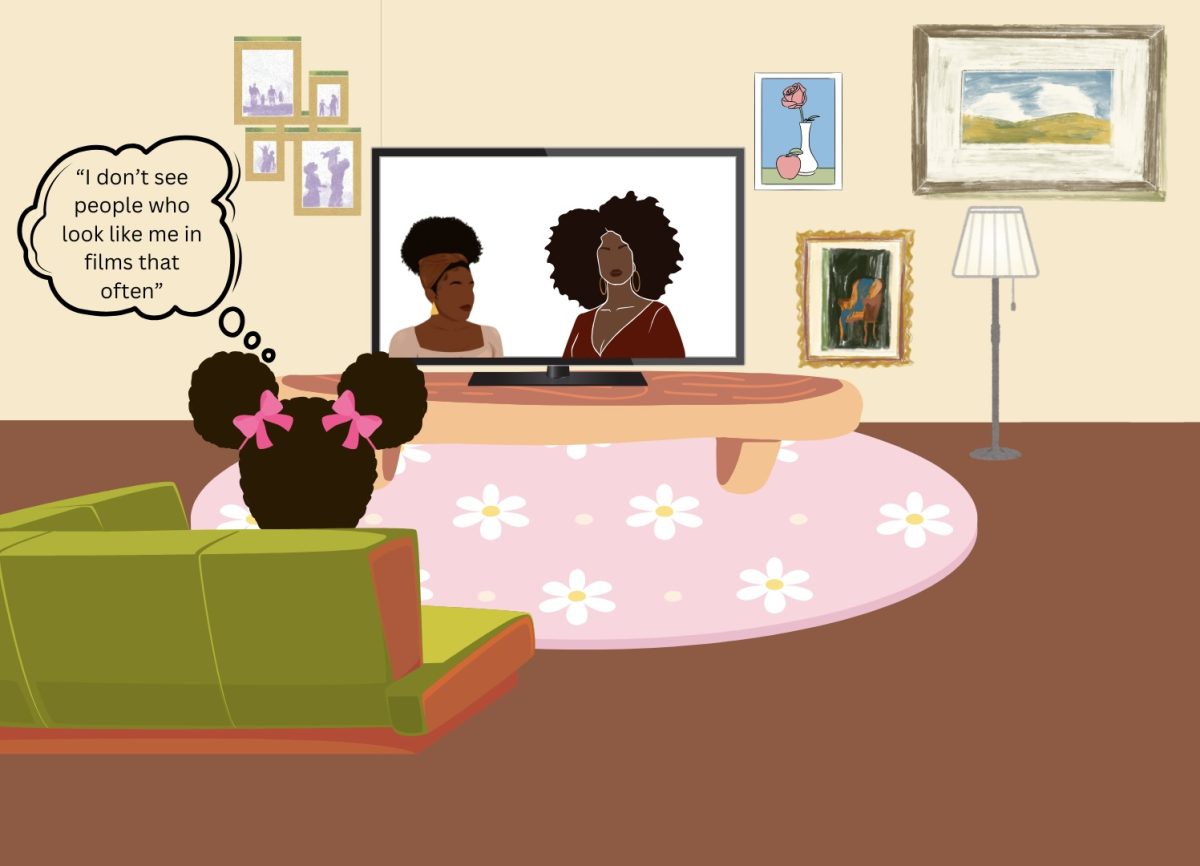As an artist, I spend hours on a single piece of artwork, so the rise of machine-made art made in seconds, becoming common in art shops and advertising, is disheartening.
After Jason Allen’s image generated by artificial intelligence won a prize in the Colorado State Fair’s annual art competition in 2022, concerns over the ethics of AI-generated images grew. The U.S. District Court ruled that AI-generated images cannot be copyrighted as they were mainly produced by nonhumans. I believe that the protection of traditional artists’ work should expand much further than this, preventing databases from using artworks without the consent of the creator.
Since Harold Cohen’s first art exhibition at the Los Angeles County Museum of Art in 1972, art produced by AI has significantly improved and gained traction, but I believe that this has begun to pose a problem in recent years. Midjourney, DALL-E and other AI software companies boast their ability to generate images from “prompts.” Softwares like Craiyon offer image generation services for free while others opt for paid services. Unlike Cohen’s first use of code to make artistic pieces, these services allow almost everyone to make complex pieces with just a few words and clicks.
In 2018, the AI portrait “Edmond de Belamy, from La Famille de Belamy” was sold for $432,500, easily surpassing both the Andy Warhol and Roy Lichtenstein artworks sold in the same auction and proving that AI images have the potential to be hugely successful in traditional art markets. Knowing that AI images are valued at a competitive level to art drawn by real people, I and other artists are growing concerned over the impacts this will have on our works. After all, why bother paying a real artist when AI art systems can provide photorealistic images for much cheaper prices?
AI image-generation software is also trained using different artworks to improve the quality and realism of the images they generate. This is often done with millions of artworks without the consent of the artists. There is a clear difference between being inspired by an aspect of someone’s work and placing someone’s entire artwork into a dataset without their knowledge. Websites like “Have I Been Trained?” are being used to determine if an artwork has previously been used in popular AI image-generation systems.
Rather than its ease of use, what I find threatening about AI images is that they can easily be used for monetary gain while using the artworks of millions of artists. By using AI images instead of commissioning artists, companies can choose to not hire artists when dealing with advertisements, images in products and other visual media. Artworks online that artists like me have spent countless hours on have been automatically added to AI system databases to generate new images, which are quickly sold as “original artworks” and prints without ever remunerating one of the many artists used to produce them.
The rapid rise of AI generation is a large step in the creative field, expanding the boundaries of efficiency and creativity. However, this is at the expense of artists’ roles in the creative process. I think AI-generated images should not be allowed to be copyrighted, not only because they have nonhuman artists but also because of the unlicensed use of art in their creation.
While there is certainly a preference for traditional means of art — whether it be for its originality, accuracy, style or conveyance of human emotion — AI art is quickly adapting and improving in quality. There is no guarantee that AI art will not take the jobs of illustrators, photographers and graphic designers in the future, even if it cannot replace traditional art entirely. AI image generation is no longer a niche subject of art. It is quickly gaining popularity and making its way into social media and businesses, costing much less than commissioning or hiring human artists.
Prohibiting AI software from forcibly including images in their databases will stop the unfair usage of countless artworks. For as long as AI systems are allowed to use any image it gains access to, artworks will be repurposed without the artists’ consent or recompense. I refuse to call AI-generated images that are freely sold or used in advertising just “art” until I can ensure another artist’s work has not been stolen to create it.









